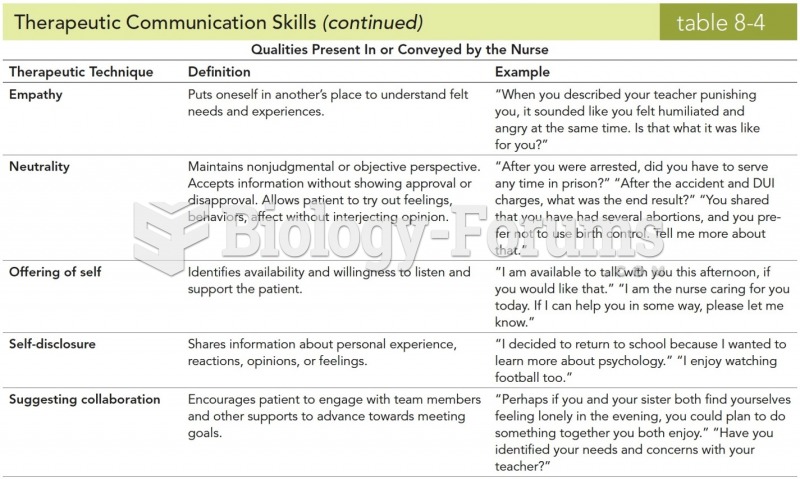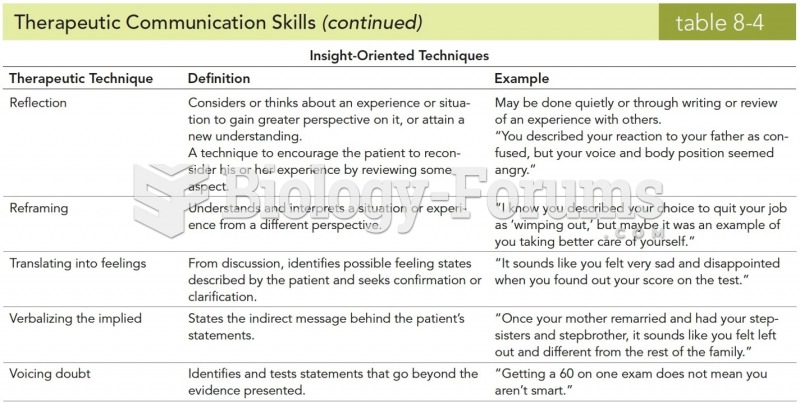Gesturesmovements of the hands and armsare an important type of nonverbal communication. In fact, they are so fundamental that people who have been blind from birth use them. The most common forms of gestures are what social scientists call illustratorsmovemen ts that accompany speech and that can't stand alone. Scratching your head when searching for an idea and snapping your fingers when you find an idea are examples of illustrators that complement verbal messages. Research shows that North Americans use illustrators more often when they are emotionally arousedtrying to explain ideas that are difficult to put into words when they are furious, horrified, very agitated, distressed, or excited. A second type of gestures is emblemsdeliberate nonverbal behaviors that have a very precise meaning, known to virtually everyone within a cultural group. For example, we all know that a head nod means yes, a head shake means no, a wave means hello or goodbye, and a hand to the ear means I can't hear you. And almost anybody over the age of seven knows the meaning of a raised finger. A third type of gestures is adaptorsself-touching behaviors. (To make matters confusing, sometimes these behaviors go by the name of manipulators.) Whereas we usually use emblems consciously to express a message, adaptors are usually unconscious. For example, you might fiddle nervously with your hands or click a pen during a high-stress job interview. Research confirms what common sense suggeststhat increased use of manipulators is often a sign of discomfort. But not all fidgeting signals uneasiness. People also are likely to use adaptors when relaxed. When they let down their guard (either alone or with friends), they will be more likely to fiddle with an earlobe, twirl a strand of hair, or clean their fingernails. Whether or not the fidgeter is hiding something, observers are likely to interpret an adaptor as a sign of dishonesty. Because not all fidgeters are dishonest, it's important not to jump to conclusions about the meaning of adaptors. The author's main purpose in this passage is to
a. explain how gestures evolved over time.
b. tell the reasons why gestures are useful.
c. list and discuss three categories of gestures.
d. tell the meanings of various common gestures.
Question 2
Gesturesmovements of the hands and armsare an important type of nonverbal communication. In fact, they are so fundamental that people who have been blind from birth use them. The most common forms of gestures are what social scientists call illustratorsmovemen ts that accompany speech and that can't stand alone. Scratching your head when searching for an idea and snapping your fingers when you find an idea are examples of illustrators that complement verbal messages. Research shows that North Americans use illustrators more often when they are emotionally arousedtrying to explain ideas that are difficult to put into words when they are furious, horrified, very agitated, distressed, or excited. A second type of gestures is emblemsdeliberate nonverbal behaviors that have a very precise meaning, known to virtually everyone within a cultural group. For example, we all know that a head nod means yes, a head shake means no, a wave means hello or goodbye, and a hand to the ear means I can't hear you. And almost anybody over the age of seven knows the meaning of a raised finger. A third type of gestures is adaptorsself-touching behaviors. (To make matters confusing, sometimes these behaviors go by the name of manipulators.) Whereas we usually use emblems consciously to express a message, adaptors are usually unconscious. For example, you might fiddle nervously with your hands or click a pen during a high-stress job interview. Research confirms what common sense suggeststhat increased use of manipulators is often a sign of discomfort. But not all fidgeting signals uneasiness. People also are likely to use adaptors when relaxed. When they let down their guard (either alone or with friends), they will be more likely to fiddle with an earlobe, twirl a strand of hair, or clean their fingernails. Whether or not the fidgeter is hiding something, observers are likely to interpret an adaptor as a sign of dishonesty. Because not all fidgeters are dishonest, it's important not to jump to conclusions about the meaning of adaptors. Adaptors are also known as
a. emblems.
b. illustrators.
c. manipulators.
d. cultures.







